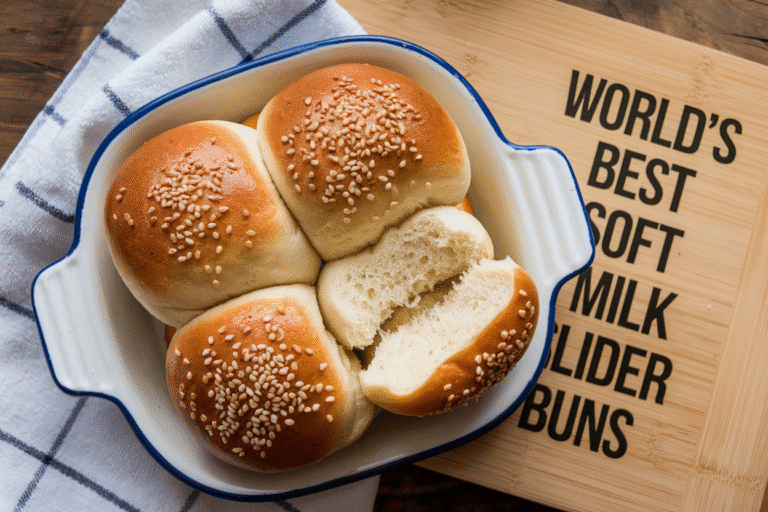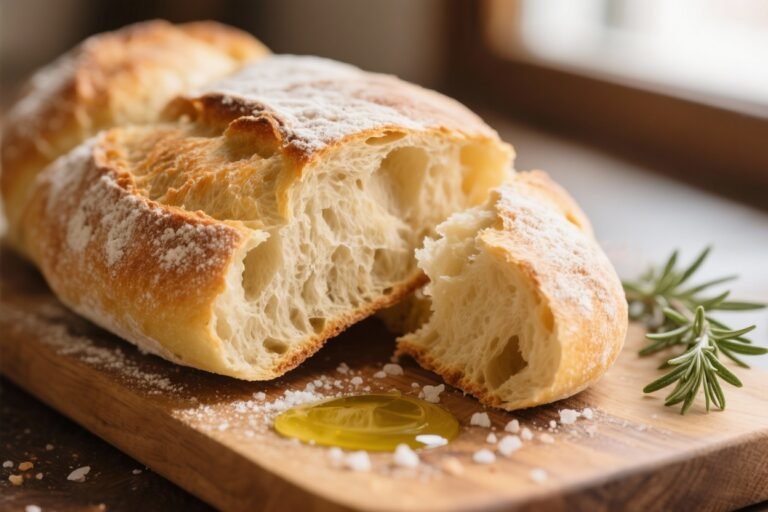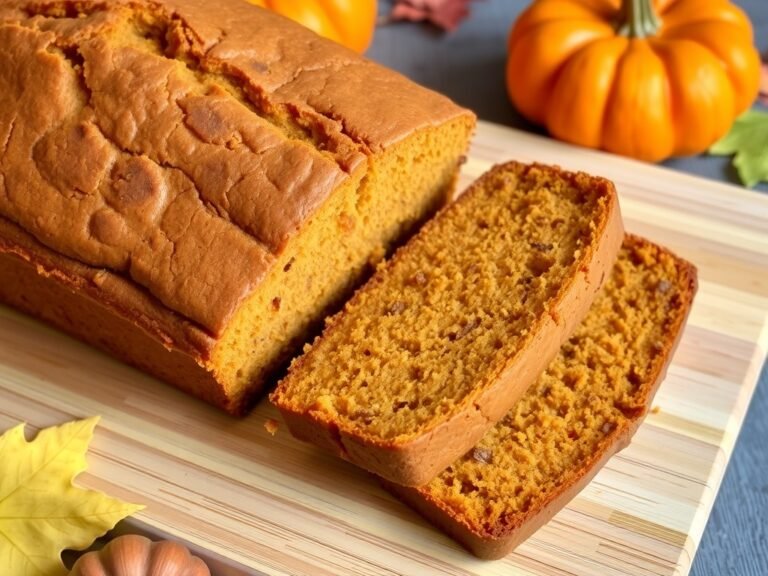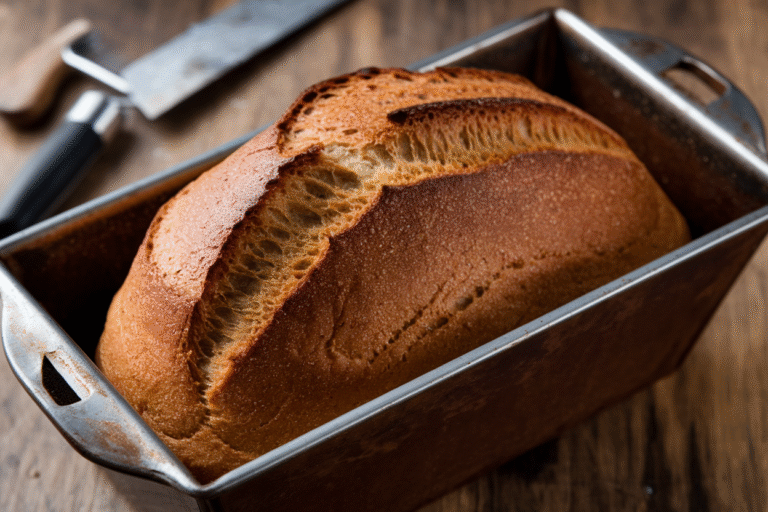Homemade Hotdog Buns
These Homemade Hotdog Buns are soft, springy, and sturdy enough for chili, kraut, or a wobbly stack of pickles.
Why You’ll Love This Recipe
- Cloud-soft texture, legit structure: Tender crumb that won’t fall apart under toppings, but still has that squish you want.
- Real flavor, not air: A touch of butter and milk adds richness that store-bought buns forgot existed.
- Custom size: Regular dogs, jumbo dogs, even footlongs—shape them how you like.
- No special pans: A regular baking sheet works.Optional: a foil “corral” for perfectly straight sides.
- Freezer-friendly: Make a batch now, be a hero later.
Ingredients Breakdown
- Bread flour (3 1/2 cups / 420 g): Higher protein for better chew and structure. All-purpose works, but the buns will be slightly softer and less robust.
- Whole milk (1 cup / 240 ml), warmed to 100–110°F (38–43°C): Adds richness and softness. You can sub half-and-half with a splash of water, or use water plus 2 tbsp milk powder.
- Water (1/3 cup / 80 ml), warm: Helps hydrate the dough without making it heavy.
- Instant yeast (2 1/4 tsp / 7 g): Fast, reliable rise.Use active dry at the same amount; just proof it in the warm milk first.
- Granulated sugar (2 tbsp / 25 g): Feeds yeast and adds light sweetness for color and flavor.
- Unsalted butter (3 tbsp / 42 g), softened: Fat for tenderness and flavor.
- Egg (1 large): Enriches the dough and boosts structure.
- Fine sea salt (1 1/2 tsp / 9 g): Flavor and gluten control—don’t skimp.
- Egg wash (1 egg + 1 tbsp milk): For that glossy, bakery finish.
- Optional toppers: Sesame seeds, poppy seeds, or everything seasoning.
Step-by-Step Instructions
- Warm and whisk: In a large bowl (or stand mixer), whisk warm milk, warm water, sugar, and yeast. Let sit 5 minutes until foamy. If nothing happens, your yeast is probably ghosting you—get fresh.
- Mix the dough: Add egg, butter, and salt.Stir in 3 cups (360 g) of flour until a shaggy dough forms. Add remaining flour gradually until the dough is soft and slightly tacky, not sticky.
- Knead to smooth: Knead 8–10 minutes by hand or 5–7 minutes in a mixer on medium-low. You’re looking for a smooth, elastic dough that stretches thin without tearing.
- First rise: Form a ball, place in a lightly oiled bowl, cover, and let rise in a warm spot until doubled, 60–90 minutes.If your kitchen’s cold, the oven-with-the-light-on trick works wonders.
- Divide and pre-shape: Turn dough onto a lightly floured counter. Divide into 8 pieces for standard buns or 10 for smaller buns. Lightly pre-shape each into a stubby log, cover, and rest 10 minutes.
- Final shaping: Flatten one piece into a rectangle (about 4×6 inches).Fold the long side toward the center, press to seal, then roll tightly into a 6-inch log, sealing the seam. Tuck the ends under for clean edges. Repeat.
- Arrange for straight sides: Place logs seam-side down on a parchment-lined sheet, 1 inch apart.For straighter sides, create foil rails on both long edges to gently contain spread.
- Second rise: Cover lightly and proof 35–50 minutes until puffy and nearly doubled. They should slowly spring back when poked.
- Preheat and glaze: Preheat oven to 375°F (190°C). Brush buns with egg wash.Sprinkle seeds if using.
- Bake: Bake 14–18 minutes until golden brown and an internal temp hits ~195°F (90°C). Rotate the pan once for even color if your oven plays favorites.
- Cool and soften: Cool on a rack 15–20 minutes. For ultra-soft crust, lightly brush warm buns with melted butter.Try not to eat three immediately—no promises.
- Slice: Use a serrated knife to cut a slit along the top or side. Toasting is optional but glorious.
Keeping It Fresh
- Room temp: Store in an airtight bag up to 3 days. Add a paper towel inside to absorb moisture, IMO it keeps the texture primo.
- Freezer: Freeze sliced buns in a zip bag up to 2 months.Thaw at room temp, then refresh in a 300°F (150°C) oven for 5 minutes.
- Revive day-old buns: Quick toast or a minute in a warm oven brings them back to peak performance.
Benefits of This Recipe
- Better bite: The enriched dough means softer crumb and richer flavor than standard rolls.
- Less crumble, more grippable: Designed to hold saucy toppings without turning into confetti.
- Customizable: Size, shape, topping—your call.
- Budget-friendly: Pantry staples become premium buns for a fraction of bakery prices.
- Make-ahead friendly: Dough and buns both freeze well, FYI.
What Not to Do
- Don’t rush the rise: Under-proofed dough = dense buns. If they’re not puffy, wait.
- Don’t over-flour: Sticky hands are temporary; dry dough is forever. Keep it slightly tacky.
- Don’t skip the egg wash: That golden, bakery sheen doesn’t happen by accident.
- Don’t overbake: Dry buns are sad.Pull them when they’re just golden and set.
- Don’t cut while piping hot: Steam will gum up the crumb. Let them rest a bit—discipline, my friend.
Different Ways to Make This
- Overnight cold rise: After kneading, refrigerate the dough 8–24 hours. Shape cold, proof longer, bake as directed.Deeper flavor with minimal effort.
- Dairy-free: Use warm water plus 2 tbsp olive oil instead of milk and butter. Slightly less rich but still soft.
- Whole wheat twist: Swap in 1 cup (120 g) whole wheat flour and add 1–2 tbsp extra water. Expect a heartier chew.
- Potato buns: Add 1/2 cup (100 g) mashed potatoes and reduce flour by about 1/4–1/3 cup.Mega softness unlocked.
- New England split-top: Shape into rectangles, nestle close in a pan so sides bake flat. After baking, butter the sides and griddle for that lobster-roll vibe.
- Seeded bakery style: Brush with egg wash and sprinkle sesame, poppy, or dehydrated onion/garlic for flair.
FAQ
Can I make these without a stand mixer?
Yes. Mix with a spoon, then knead by hand for about 10 minutes.
Use a bench scraper to keep the counter tidy and resist adding too much flour.
How do I know when the dough is kneaded enough?
It should be smooth, elastic, and pass a loose windowpane test—stretch a bit of dough thin enough to see light without tearing immediately.
What if my buns spread too much?
Proof slightly less next time, and make sure your dough wasn’t too soft. You can also place foil rails along the sides to guide their shape.
Can I make jumbo or footlong buns?
Absolutely. Divide into 6 pieces for jumbo or 4 for footlongs and roll longer.
Add a few minutes to bake time and watch the color.
Do I have to use bread flour?
No, but bread flour gives better structure. With all-purpose, keep the dough on the tacky side and avoid over-proofing.
How do I get the really soft crust?
Brush the warm buns with melted butter and let them cool under a clean kitchen towel. Steam plus fat equals pillowy perfection.
Can I par-bake and finish later?
Yes.
Bake until pale and just set (about 10–12 minutes), cool, freeze, then finish baking 5–7 minutes from frozen at 350–375°F to brown.
Why did my buns turn out dense?
Common culprits: old yeast, cool liquid, under-kneading, or cutting the rise short. Also, too much flour will weigh them down.
The Bottom Line
Homemade Hotdog Buns are the cheat code to elite cookouts: soft, rich, and built to handle real toppings. With simple ingredients and a straightforward method, you’ll get bakery-level results on a Tuesday.
Make a batch, stash some in the freezer, and watch even basic hotdogs level up. Your grill game just got a permanent upgrade.







